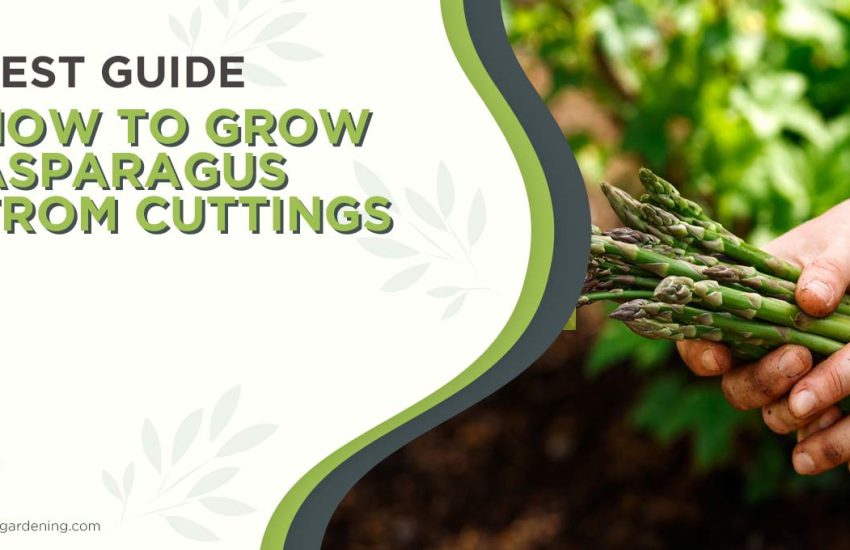The Best Ground Cover Plants to Grow in Michigan
Michigan is a state full of natural beauty, but it’s also home to some of the harshest winters in the country. If you’re not careful, your garden can become completely barren when winter rolls around. It’s happened to us before, and we want to guide you through best practices to help turn it around.
Plenty of ground cover plants will thrive even under extreme weather conditions. These plants are perfect for planting in Michigan because they’ll help protect your soil from erosion and keep weeds at bay, so you don’t have to spend time weeding. Continue reading to learn more about cover plants:
Factors To Consider When Selecting Ground Cover Plants to Grow
Here are some things that you should consider when selecting ground cover plants:
Climate
This goes without saying but some plants will not survive in some areas of the country or your backyard if it gets too cold or hot during the summer months. You will want to ensure that any plant you select will survive where you live.
Shade Tolerance
A few ground covers will not tolerate shade very well, while others require total sun exposure to thrive. If the area where you want to plant them gets too much shade, this might not be the best choice for your particular situation.
Water Requirements
Some plants require more water than others. This is something else that needs to be considered when selecting a plant for your garden space because if it does not get enough water, it will die back quickly and become an eyesore rather than an enhancement to your property!
Soil Type
Most ground cover plants will grow well in most soil types, but some prefer sandy soils, while others do better with clay soils. If you have grassy areas with poor drainage, use plants that grow best in wet soil, such as violets or mosses. Choose drought-tolerant plants like lavender and sedum if your yard has dry clay soil.
Sunlight Requirements
Does your area receive full sun? Partial shade? Full shade? Some ground covers require more sunlight than others; therefore, you must select one that fits your needs and location.
Time Of Year
You will want to know what time of year you will plant your ground cover to choose the best types for your location. For example, if you live in an area that gets cold during the winter, you will want to plant your ground cover in the early spring, so it has time to grow before winter comes around. Some plants will not survive freezing temperatures, while others may be able to survive but will not look their best if frozen during the winter months.
Best Ground Cover Plants to Grow in Michigan
Below is a list of ten cover plants that will flourish in Michigan:
Moss phlox
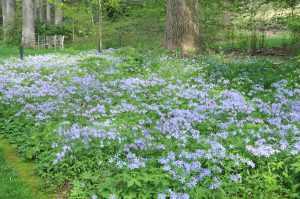
Moss phlox (Phlox subulata) is a low-growing ground cover that can be used as an alternative to moss or creeping thyme. This plant grows well in cool, shady areas and prefers moist soil.
The foliage is dark green and has a silvery appearance. It blooms in spring with small white flowers that attract bees and butterflies.
Moss phlox can be used for erosion control and ground cover in wooded areas. It makes an excellent border plant for your garden beds. The best time to plant this ground cover is during fall or early spring when the plants are dormant. You can use this with other flowering plants, such as bleeding hearts or wild geraniums.
If you want to use moss phlox as a lawn alternative, ensure you have enough space for each plant because they will spread out over time. They grow best in the shade but can tolerate partial sun if adequate moisture is available at all times.
Three-Leaved Stonecrop
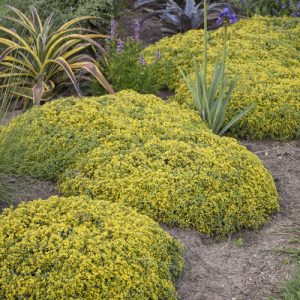
Three-leaved stonecrop is an easy, low-growing plant that will spread by creeping roots and become a ground cover. It is native to the eastern U.S. and Canada and grows in moist woodlands and forests.
The leaves of the three-leaved stonecrop are small, dark green, and oval-shaped. The flowers are small and white, blooming from mid to late spring. The leaves have a reddish cast when they emerge in spring.
Three-leaved stonecrop is hardy in zones 4 through 8, making it a good choice for growing in Michigan’s climate. You can grow this plant in full sun or partial shade, but if you’re using it as a ground cover, the partial shade will help prevent your lawn from being overtaken by the plant!
Geranium ‘Rozanne’
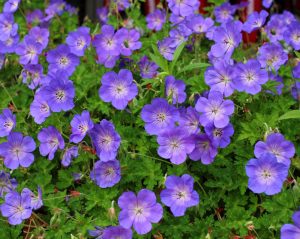
The ‘Rozanne’ geranium is a compact, vigorous ground cover that blooms from spring to fall. It’s ideal for edging a border or filling in bare spots. They grow well in containers or mixed with other perennials.
The bright pink flowers have burgundy centers and grow on top of the leaves in clusters at the tips of the stems. The leaves are dark green, deeply lobed, and slightly hairy.
The ‘Rozanne’ geranium is hardy in zones 5 through 8, but it performs best in full sun to part shade. It also tolerates dry soil once established but prefers moist conditions during its first year of growth.
Hosta

Hosta is a perennial plant that is often used as a ground cover. It works well in shade and sun and grows best in moist, well-drained soil. Hosta can be planted in spring or fall, but it is best to avoid planting during summer, when temperatures are high, and water is scarce.
Hosta plants are hardy and easy to grow, which makes them a favorite for many gardeners. The leaves of hostas vary in shape and size, with some having leaves that have an unusual shape. Some varieties have leaves that look like elephant ears, while others have leaves that resemble arrowheads or hearts.
The flowers on hostas come in different colors: white, yellow, pink, or lavender. They’re usually small and not showy except when they start to fade and turn brownish-yellow or red.
Mazus
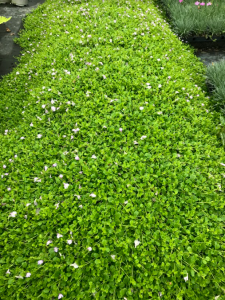
Mazus is an excellent ground cover for shade gardens because it’s a shade-loving plant. It spreads by underground runners that eventually make the plant look like a carpet of leaves.
Mazus grows well in moist soil and is drought tolerant once established. It’s also deer resistant, making it an excellent choice for gardens with wildlife.
Mazus is easy to grow from seed or root divisions, but if you want to start your plants from seed, sow them indoors six weeks before the last frost date, then transplant them into pots when two sets of true leaves appear.
European Wild Ginger
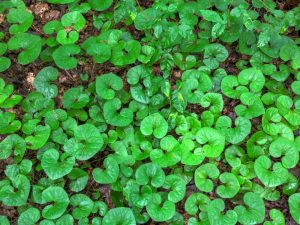
European wild ginger (Asarum europaeum) is a dainty, ground-hugging perennial that’s easy to grow and great for shady areas. The plant looks like wild ginger with its heart-shaped leaves but doesn’t have the same fragrance or taste. You can use the plant in borders or as an understory plant in the middle of your yard.
European wild ginger has small, white flowers that bloom in spring, followed by small red berries later in the year. The plant grows best in part shade to full shade and tolerates most types of soil except wet ones.
Sedum Rupestre ‘Angelina’
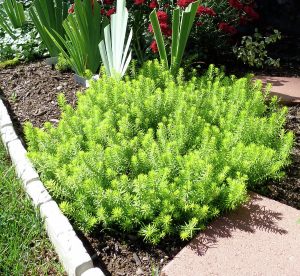
If you’re looking for an easy ground cover that will thrive in most of Michigan’s gardens, look no further than sedum. This plant is a perennial succulent that comes in wide varieties and forms. It’s also one of the easiest plants to grow.
Sedum rupestre ‘Angelina’, also known as stonecrop, is a wide variety of sedum with tiny white flowers that bloom late spring through fall. The foliage can be green or variegated, depending on where it was grown.
This plant is known for its ability to thrive in poor soil conditions and total sun exposure. The only thing it doesn’t like is dryness, so ensure you provide regular watering during hot summer months when temperatures exceed 80 degrees Fahrenheit (27 degrees Celsius).
Barrenwort
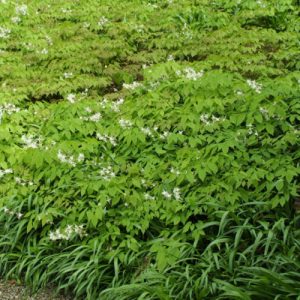
Barrenwort is a perennial ground cover that grows best in the midwest half of the United States. It’s low-maintenance and tolerates shade, making it an ideal choice for sunless areas of your yard.
Barrenwort has delicate, green leaves and grows to about 12 inches tall. It spreads quickly to fill in bare spots in your garden.
The flowers are small and white, with four petals apiece. They bloom in early spring before most other plants start to grow.
In addition to being a good ground cover plant for shady areas, barrenwort also grows well in full sun. It can be planted alongside other plants or under trees where you want a little extra color during springtime blooms.
Threadleaf Coreopsis
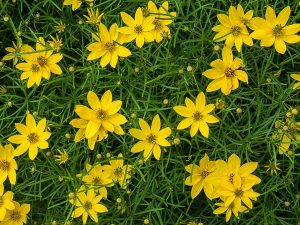
The Threadleaf coreopsis (Coreopsis verticillata) is a perennial plant that grows in Michigan and the midwest. Department of Agriculture classifies plant hardiness into zones 3 to 9. I
Threadleaf coreopsis produces yellow flowers that attract butterflies and other pollinators. The plants may be grown from seeds or started indoors in pots before planting outside in the spring.
This plant grows best in full sun but will tolerate partial shade if necessary. It requires well-drained soil that isn’t too fertile or moist, as excess water can cause crown rot disease on this plant’s roots. It needs good drainage, so its roots aren’t sitting in standing water for long periods due to rain or irrigation water splashing off the ground around it after watering your lawn or garden areas nearby.
Cheddar Pink
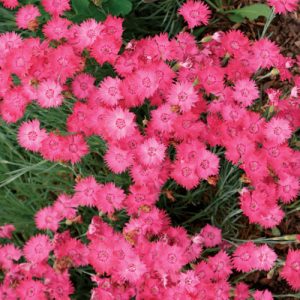
A ground cover that’s hardy and drought-tolerant, cheddar pink has a pretty pink flower that blooms in early summer. The plant grows well in full sun to part shade and will thrive in sandy or rocky soil. It’s a good choice for a woodland garden or to fill an area under trees where grass won’t grow.
The leaves of cheddar pink have a rough texture that helps the plant retain water, making it an excellent choice for areas with poor drainage. Cuttings or seeds can propagate the plant, but it’s easy to find at local nurseries if you prefer not to start from scratch.
How do they compare against each other?
| Plant Name | Characteristics | Best Growing Conditions | Best Uses |
Moss Phlox | Low-growing, with dark green foliage. Has a silvery appearance and blooms in spring with small white flowers. | It is best planted in fall or early spring when other plants are dormant. Prefers moist soil and grows best in cool shady areas. | Used for erosion control and ground cover. Excellent border plant for garden beds. |
Three-Leaved Stonecrop | Small, spreading, with dark green and oval-shaped leaves. Flowers have four white petals, which distinguishes them from other stonecrops. | Grows best in partial to full shade in well-drained soil. It can also tolerate full sun and seldom needs watering. | Well-suited for use as a groundcover due to its spreading nature and can act as a living mulch. |
Geranium ‘Rozanne’ | Has saucer-shaped bright pink flowers with burgundy centers. The leaves are dark green, deeply lobed, and slightly hairy. | Hardy perennial that performs best in full sun to part shade. It can also tolerate dry soil once established. | Grows well in containers and can be used as a beautiful garden plant in borders or rock gardens. |
|
Hosta | Large ribbed leaves arranged in a cluster at the base of the plant. They’re usually small and not showy except when they start to fade and turn brownish-yellow or red. | Can be planted in spring or fall, but avoid planting during summer, when temperatures are high and water is scarce. They thrive in light or semi-shade with fertile soil rich in organic matter. | They can create a beautiful ground cover in these challenging areas. |
Mazus | Compact, spreading through low-growing underground runners. Creates thick mats of green leaves resembling a carpet. The flowers exhibit varying colors depending on the species. | Easy to grow from seed or root divisions in moist soil. Prefers full sun to partial shade. Also, grows well in loamy soil and is tolerant of a variety of soil types. | Ideal ground cover for shade gardens due to its shade-loving nature. It can create a lush carpet of leaves in shaded areas. |
European Wild Ginger | Looks like wild ginger with leaves that are heart-shaped, dark green, and shiny. It has small, white flowers that bloom in spring, followed by small red berries later in the year. | The plant grows best in part shade to full shade and tolerates most types of soil except wet ones. Likes a rich, moist, slightly acidic soil, rich with humus. | It can be used in borders or as an understory plant in the middle of a garden or yard. The plant is also suitable for use in rock and container gardens. |
Sedum Rupestre ‘Angelina’ | Striking spiky yellow leaves that turn red-orange color with cold weather in the fall. It forms a quick ground cover with low maintenance required. | Prefers full sun to partial shade. Can thrive in poor to moderately fertile, medium moisture conditions and well-drained soils. | It is often used as a ground cover in various settings, and its rapid growth and trailing habit make it effective for creating a colorful carpet of foliage. |
Barrenwort | Produces lance-shaped delicate green leaves. The flowers are small and white, with four petals apiece. Can grow to about 12 inches tall with rhizomatous growth. | Grows best in partial shade to dappled sun, but it can tolerate full shade. Requires well-drained soil and benefits from regular watering, especially during the establishment phase. | Tough, slow-growing ground cover that is well-suited for dry, shady areas, even under large trees. Can add visual interest to gardens, making it a valuable addition to landscaping and gardening. |
| Threadleaf Coreopsis | Thread-like, dark-green leaves that are divided into three segments in a whorled pattern. It produces small, yellow, daisy-like flowers. | Grows best in full sun but will tolerate partial shade. It requires well-drained soil types, including clay, sand, and rocky soil. | Excellent pollinator plant, attracting bees and butterflies. It can be scattered in an ornamental garden for bright punctuations of color. |
Cheddar Pink | Produces small, fragrant, pink flowers with fringed petals that bloom in late spring to early summer. Leaves have a rough texture. | Prefers full sun to partial shade and well-drained soil. It is drought-tolerant once established and can thrive in sandy or rocky soils. | Can be used as a ground cover, in rock gardens, or as an edging plant. It’s a good choice for a woodland garden or to fill an area under trees where grass won’t grow. |
Benefits of Ground Cover Plants
Low Maintenance
Ground cover plants require little maintenance, making them ideal for those with busy schedules or limited time for gardening. Wide varieties do not need much watering or pruning, making them perfect for homeowners with active lifestyles.
Help Control Erosion
Erosion occurs when the wind blows soil particles off the ground and into water sources. Erosion is a significant concern in rural areas with little vegetation to hold the soil together. Ground cover plants help control erosion by providing shade from sunlight. This allows rainwater to soak into the soil.
Aesthetic Value
They can screen unsightly views from neighbors or passersby. If you don’t like what people see when they look at your yard, consider planting some bushes or trees on top of the hill behind your house so that no one can see it from below. Then grow some ground cover plants in front of those trees and bushes to make it look like there’s nothing back there!
Ground Cover Plants Help Keep Pests Away
The plants help keep pests away from your home by making it harder for them to get under your property’s foundation or into your attic or crawl space. There are many different types of ground cover plants that you can use for this purpose, including vinca vine, creeping thyme, and lavender.
Ground Covering Plants Improve Drainage Around Your Home
Suppose areas near your home tend to flood during heavy rains because of poor drainage. In that case, planting ground cover helps alleviate that problem by adding an extra layer that allows water to flow through more efficiently rather than pooling around your foundation walls or basement flooring.
In conclusion, Michigan is a fantastic place to grow plants. The weather can be rough, especially during the winter, but it’s worth it in the end. You’ll be rewarded with beautiful flowers and plants that will last you through the year.
No matter what type of ground cover plant you’re growing, you should start with seeds or small plants and move them indoors when it gets cold. If your house gets cold enough for you to need a space heater, your plants will need somewhere warmer to live too.
FAQs About Growing Plants in Michigan
What Zone is Michigan in for Planting Flowers?
Michigan covers a range of USDA Hardiness Zones, typically spanning from Zone 4 to Zone 6. Northern parts of Michigan, including areas like the Upper Peninsula, fall into Zone 4. Central and southern regions of the Lower Peninsula, such as Grand Rapids and Lansing, often fall into Zone 5. The southernmost parts of Michigan, including Detroit and the surrounding areas, may fall into Zone 6. This means that the state experiences minimum temperatures from -30 to -5 degrees Fahrenheit. The specific zone can affect which flowers will thrive in your garden.
What Factors Should I Consider When Selecting Ground Cover Plants?
Factors to consider include the plant’s climate tolerance, shade tolerance, water requirements, soil type, sunlight requirements, and the time of year for planting.
When To Plant Perennials in Michigan?
Spring is an ideal time to plant perennials in Michigan. As the soil begins to warm, typically in April and May, it provides a conducive environment for root development. Fall is another opportune time for planting perennials. The soil is still warm from the summer months, allowing plants to establish roots before the onset of winter.
What Is the Michigan Garden Zone Map?
The Michigan garden zone map is a visual representation of the different USDA hardiness zones within the state. It helps gardeners determine which plants are most likely to thrive in their specific location. Michigan’s zones range from 4a (coldest) to 6b (warmest).
What Is My Growing Zone in Michigan?
Your specific growing zone in Michigan can be determined by referring to the USDA Plant Hardiness Zone Map and locating your geographical area. This map divides North America into 11 separate zones, each of which represents an area of winter hardiness for the plants of agriculture and our natural landscape.

